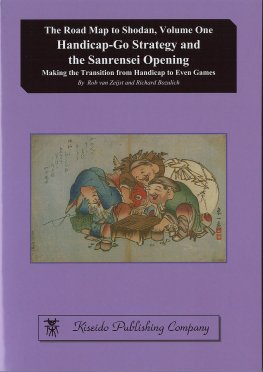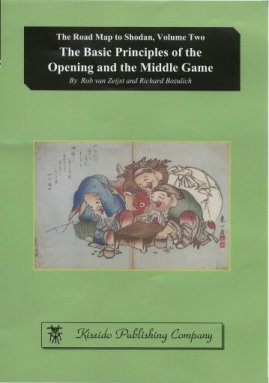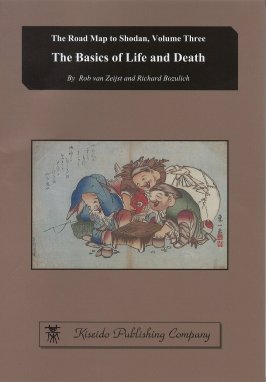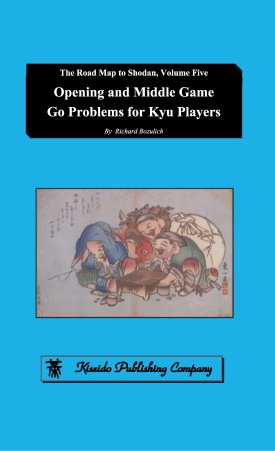
 |
The study of handicap go is the natural way to learn how to build thick
positions, then to turn the influence of these positions into territory. The handicap
stones are placed high on the fourth-line star points, so the black player is
forced to think globally. Eventually, the novice will find himself playing Black without
a handicap. The easiest way to make the transition from handicap games to even games is to
adopt the Sanrensei Opening. In this opening, Black occupies three star points on one side
of the board, so the basic strategy of playing for influence used in handicap games is the same.
By adopting this opening and executing the strategies outlined in this book, your stronger
opponents will learn to respect your moves.
|
 |
Go is played on a very large board consisting of 361 playing points. During the opening
phase (the fuseki), there will be perhaps 50 to 100 candidates for a plausible move, and
for each of these candidate moves the opponent's many possible responses must also be
considered, as well as your responses to each of these responses, and so on. Clearly, an
exhaustive search is impractical, so the expert go player needs some principles to guide
him in finding the best move.
This book presents those basic strategic principles. The 20 principles presented here will lay the foundations for the study of opening theory in general as well as the currently popular opening systems, such as the Sanrensei Opening, the Chinese Opening, etc., presented in other volumes of this series. Independent review: bengozen.com
|
 |
Most go players know that the best way to improve one's tactical and reading skills
is to solve live-and-death and tesuji problems. This book is systematic introduction to
life and death for beginning players. Part One of starts out by presenting all the basic
eye spaces. It then shows how three basic tesujis (the hane, the placement, and the
throw-in) are used to reduce the eye space of a group to one eye, then to kill that group.
The second part is a life-and-death dictionary that presents 177 basic positions that often
arise from josekis or common middle-game skirmishes in the corners and along the sides. As
such, it is an invaluable reference work that deserves a place in every go players' library.
|
 |
In life-and-death situations and during the sharp skirmishes that arise in the middle game,
brute-force analysis is usually required. However, intuition also plays a role in your ability
to instantly find the key move that turns the position in your favor. Those key moves are
called tesujis. There are about 45 different kinds of tesujis that a dan-ranked go player
should be familiar with. If a player has solved many problems that involve a certain kind
of tesuji, he or she will immediately recognize — almost unconsciously — positions in
their games where that tesuji is applicable. This is called 'pattern recognition'.
Of course, the player must confirm that the move is indeed the required tesuji by
brute-force analysis after the tesuji is played.
|
 |
Opening and Middle Game Go Problems for Kyu Players presents 200 problems of positions that
arise in the opening and middle game. It is intended to supplement the Graded Problems
for Beginners and Graded Problems for Dan Players series. Whereas the books in those two series are mainly
about life and death, this book consists mainly of whole-board positions that typically arise in the
opening and middle game. Some of the topics covered are fighting inside spheres of influence,
neutralizing thick positions, using thick positions to attack and make territory, the direction in
which to attack and the direction in which to build walls, invading thin positions, defending and
attacking weak groups, and matching the joseki to the overall position. Numerous examples of some
of the most important go proverbs are given, such as 'Play hane at the head of two stones,'
'When caught in a crosscut, extend,' and 'Capture the cutting stone.' The initial problems in
the book are in the 15- to 20-kyu range, but they gradually become harder in the latter part of the book
reaching the level of 1-kyu by the end of the book.
|
If you need more information, Kiseido may be contacted at the following address:
Kiseido
Kagawa 4-8-32
Chigasaki-shi
Kanagawa-ken
Japan 253-0082
FAX +81-467-81-0605
e-mail: kiseido61@yahoo.com
Return to go-book page